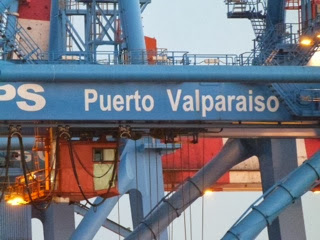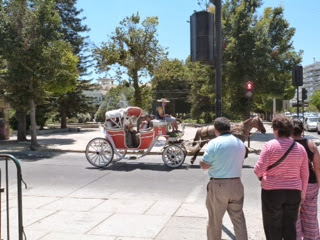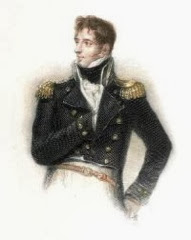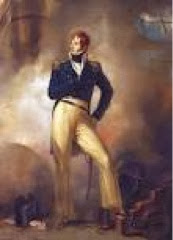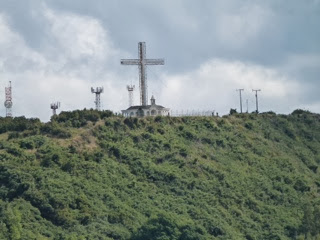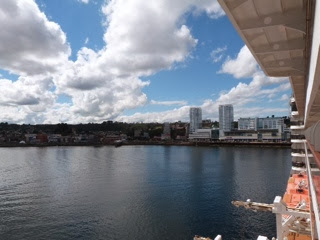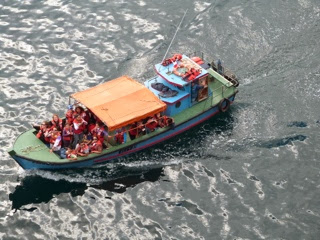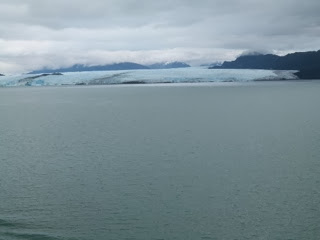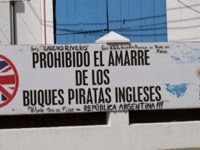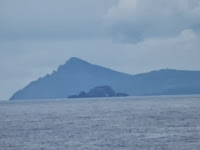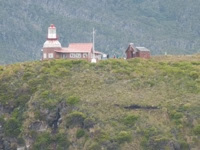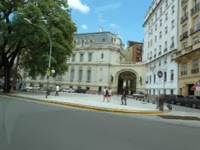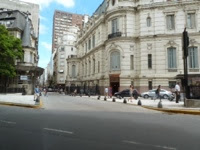We arrived on time at 0630 and sunrise revealed a clear blue cloudless sky. A perfect day appeared to lay ahead, but by the time we had had breakfast a thick sea fog had swept in, enveloping the city.
Lord Thomas Cochrane – Vice Admiral Chilean Navy 1818 – 1822
No this was not another Admiral aboard QV as a guest lecturer. My brother in law David Holt lent me a book on Lord Cochrane some months ago. I brought it with me but only realised, when it was mentioned in a lecture last week, that some of Cochrane’s greatest exploits happened here in S America. So I dropped Alex Ferguson’s autobiography (a Christmas present you understand) and started to read “Cochrane the Dauntless” by David Cordingly from which I gleaned some of the history I will share with you here.
Puerto Montt
After fleeing North America in the early 20th century Butch Cassidy and the Sundance Kid are said to have settled in Argentina and bought ranches with the proceeds of their US bank and train robberies. They are said to have crossed the Andes and travelled to Puerto Montt to sell their cattle and buy supplies. As we know they returned to the more exciting life as bank robbers and were eventually killed in a shoot out with the Bolivian army.
Change of course
The Captain has just announced that we are having to divert as there is someone aboard who needs urgent hospitalisation. She is aiming for Concepcion and it appears that a boat will come out to us to collect the patient. We are due in Valparaiso early tomorrow so the individual concerned must be very ill if he or she needs to be taken off now. Whether or not this diversion will delay our arrival tomorrow is not clear. Valparaiso marks the end of this leg of the World voyage and a large number of people are leaving the ship (and a similar number joining).
Amalia and Pio XI Glaciers, Chile
Many of the world’s glaciers are retreating. Amalia is located in the Bernardo O’Higgins (Could this be one of Brian Kelly’s relatives?) National Park on Chile’s Southern Patagonian coastline, and it has retreated nearly 5 miles over the last 50 years. Frankly it looked much the same as it was when we were here 7 years ago.
Ushuaia and Punta Arenas
After our trip around Cape Horn we tracked north to the Beagle Channel and into Ushuaia where we spent Tuesday. It is a busy little community and the centre for Antarctic expeditions and fjord cruises. I could remember that the main street was parallel to the port but up a hill.
Cabo de Hornos – Cape Horn
Last time we were at Cape Horn it was early evening – darkish, cold and windy. On that occasion we were sailing from the Pacific to the Atlantic, west to east and it was only during a lecture the day before that I heard that cruise ships rarely travel round Cape Horn by the obvious route around the bottom of the continent.
Admiral The Right Honourable Baron West of Spithead
Last night we were less than 100 miles from the Falkland Islands. It was appropriate that in the major lecture yesterday that the former First Sea Lord should deliver it.
Don’t cry for me Argentina!
Instead we cried as the lovely, brilliant flautist Gillie Poznansky and the wonderfully talented pianist Mark Tanner left us in Buenos Aires at the end of their contract. They had given five superb recitals over the previous two weeks and had captivated us all. They were also great dinner companions.
Problems for our Lady Captain
Our next port is Puerto Madryn, Argentina where we are due tomorrow, but there are apparently problems there including some sort of blockade of the port. The Captain reported in her regular noon broadcast that there was a potential difficulty. The problems that she faced were that she has a number of passengers who are due to leave the ship there, she also has a group who have booked a 4 day tour of Patagonia returning to the ship in Ushuaia. And she needs to take on 2 Chilean pilots to assist her in navigating the waters off Cape Horn and through the Beagle Channel.

